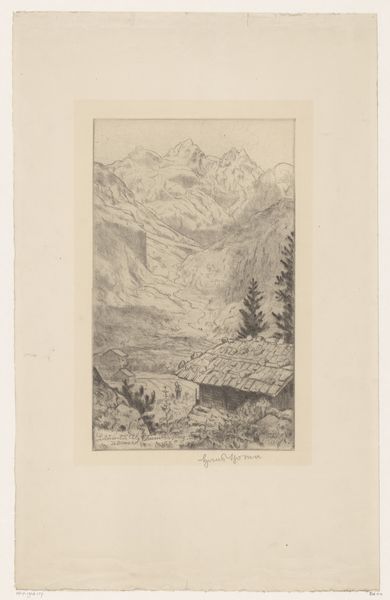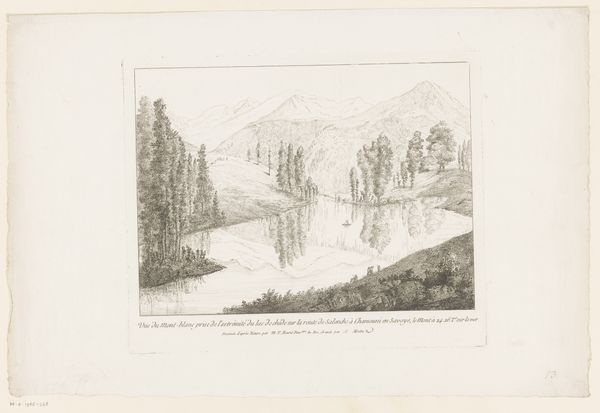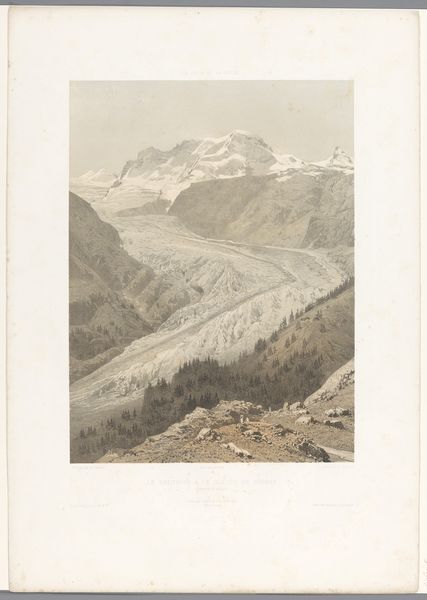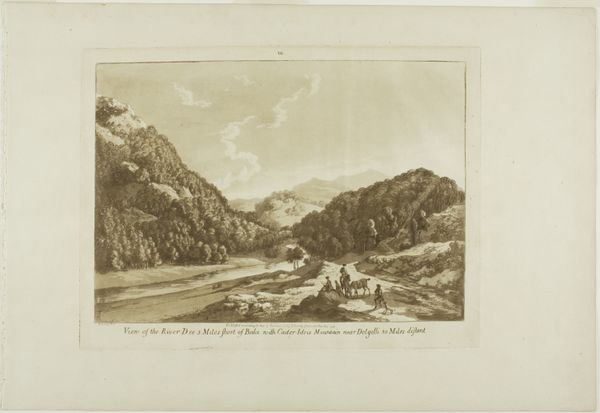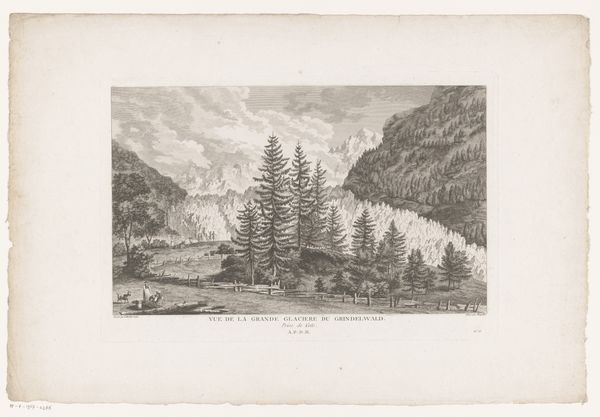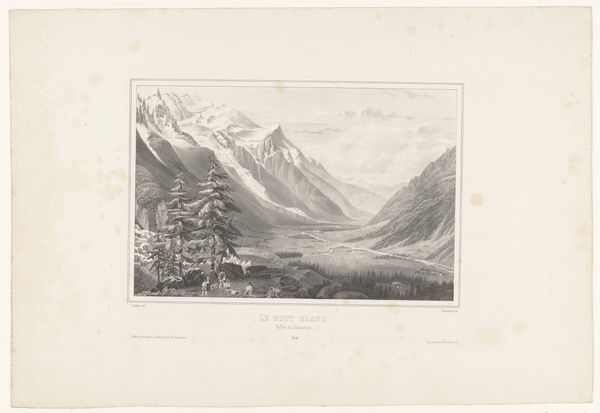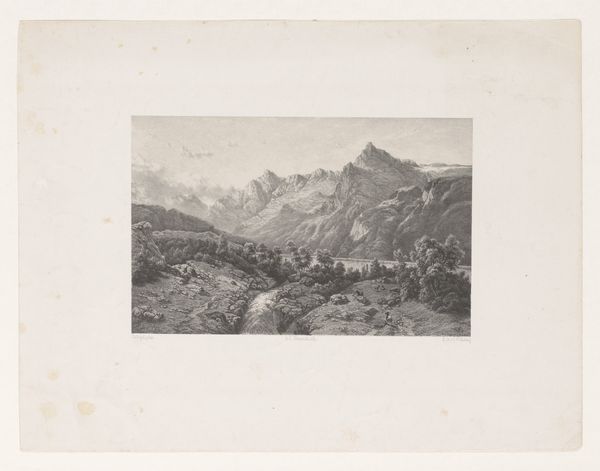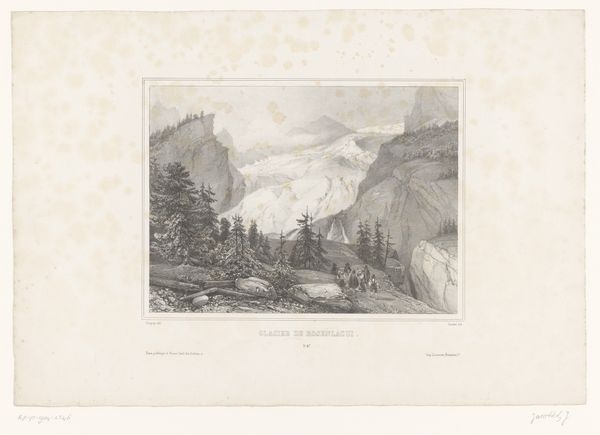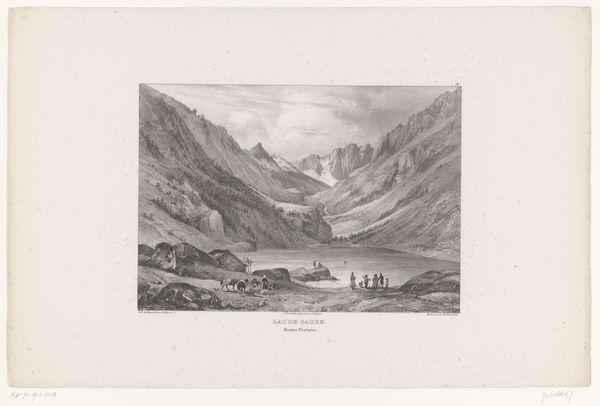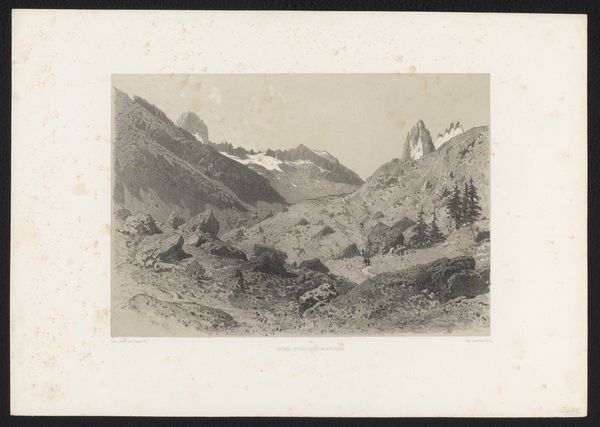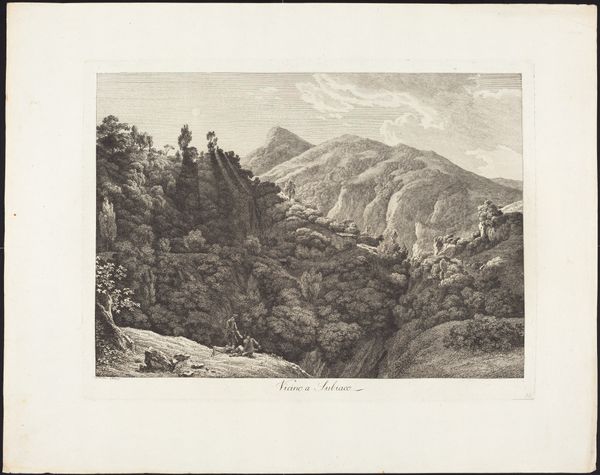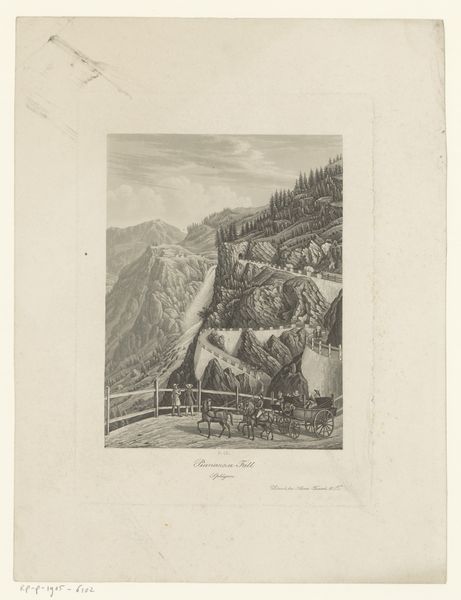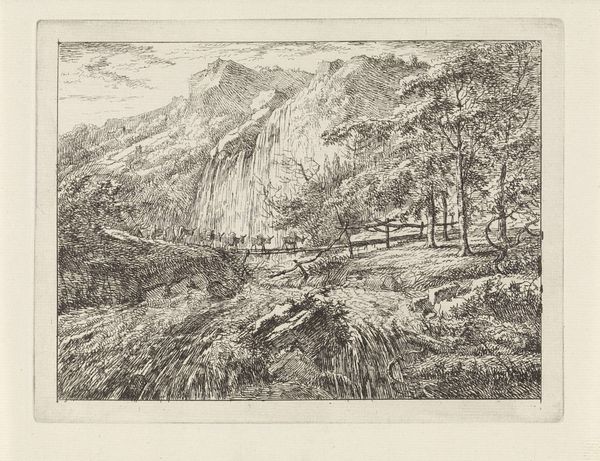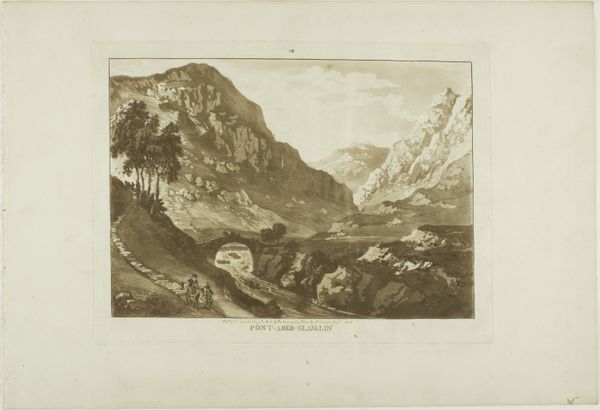
print, etching, engraving
#
aged paper
# print
#
etching
#
landscape
#
line
#
engraving
Dimensions: height 263 mm, width 320 mm
Copyright: Rijks Museum: Open Domain
Curator: Here we have “View of the Mer de Glace Glacier in Chamonix,” a late 18th-century print by Angélique Moitte. Made using etching and engraving techniques, it’s currently held here at the Rijksmuseum. Editor: It feels like an echo of something massive. This glacier, rendered with such delicate lines, it’s almost spectral, like a memory fading on aged paper. Curator: Indeed, the aged paper enhances the sense of temporal distance. Moitte employs a striking contrast between the detailed foreground and the more faintly rendered peaks, creating depth. Note how line is meticulously used to describe form, shadow, and texture. It emphasizes the sublime grandeur of the glacial landscape. Editor: Sublime indeed! The line work, so disciplined, almost scientific. It’s as if Moitte is trying to capture the essence of this imposing glacier, its sheer scale and indifferent beauty. Makes you wonder what that journey to the "summit of montanvert" was actually like. Curator: Considering this print’s creation period, think of the prevailing scientific interest in accurately depicting the natural world and classify its component parts with descriptive representation. The emphasis here, then, on observable qualities and detailed topography helps inform understanding about this relatively unknown and forbidding location. Editor: I see your point, but even within that "scientific" framework, there's such poetry in how the trees cluster at the bottom, little witnesses against that giant expanse of ice. They add humanity somehow, grounding us while our eyes wander that frozen river. The whole picture just whispers, "Nature is huge and we are tiny." And so delicate, too, as etching. Fragile against this very landscape. Curator: That's quite lovely, bringing awareness to the materials employed. The artistic creation itself mirrors the grand-yet-fleeting qualities of nature. I appreciate, also, the contrast you’ve identified that the artist intentionally used: the tiny forests underscore the overall scale. The line is, if anything, quite powerful—but maybe because I am more persuaded of the power of close study in providing meaning. Editor: Close study certainly does pay off here, teasing out the complexities held within what seems at first a straightforward scene. Curator: Absolutely, the converging of nature and scientific ambition is remarkable, capturing this natural marvel with artistic rigor. Editor: So, we depart with a newfound respect for line, ice, and the ambition of capturing immensity. It’s almost melancholic somehow, isn't it?
Comments
No comments
Be the first to comment and join the conversation on the ultimate creative platform.
